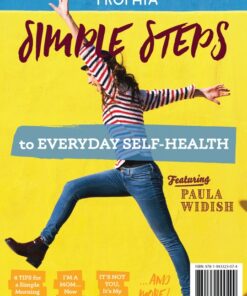Are you a fool when it comes to food labels? You’re not alone. The way the food industry twists label definitions with tricky language on food packaging makes all of us look foolish when we walk down the aisles of our local market.
We make personal choices to eat natural, wholesome, and nourishing foods. But unless we also do our research to really understand the terminology used by the food industry, we could be grabbing exactly what we don’t want. For example, when I used to see the word “natural” on a label, I assumed the ingredient list would include only things from its root word—nature. But I came to discover that if I wasn’t choosing something along the lines of a beautiful sweet potato grown in rich, organic soil, chances were good that I wasn’t getting much “nature” at all.
Here’s just a few of the common, and often ambiguous, terms you’ll find on food labels—and what they actually mean:
- Natural: Turns out this word doesn’t mean much at all. As this article on the definition of “natural” points out, the FDA is okay with this label as long as the package doesn’t contain ingredients such as artificial coloring. However, the products labeled “natural” often contain very unnatural things, including partially hydrogenated vegetable oils.
- Organic: This should be simple, but the food industry has made it really quite complicated. The California Certified Organic Farmers put together an uncomplicated PDF breaking down the meaning behind various “organic” labels.
- Cage Free: If you imagine chickens roaming in the fresh air on a lovely little farm—don’t. The only thing that “cage free” signifies is that the chickens weren’t confined to cages but allowed to roam freely in a barn. The animals don’t necessarily have access to the outdoors. Yes, the freedom to walk around, spread their wings, and interact with other chickens is far better than a life spent locked up in a cage—I’ll give you that. You can learn more about it in “How to Read Egg Carton Labels,” a great article published by the Humane Society.
- No Hormones Added: This simply means that the animal wasn’t given any hormone treatments. Keep in mind that the USDA doesn’t allow growth hormones for pigs, chickens, or turkeys, so there isn’t much point in paying extra for pork or poultry that touts this label.
Clear as mud, right? Well, until you commit the food label definitions that apply to your eating habits to memory, you could always create a wallet-sized cheat sheet. That would be a great tool to shop by. Stephanie Selene Anderson’s Put Your Money Where Your Mouth Is! A Guide to Healthy Food Shopping is another informative handbook that will help you figure out what to look for while you shop.
Be sure to educate yourself before you head out with your grocery list—because no one likes to be played for a fool. Do you have any tips to avoid being hoodwinked at the market?
Photo from iStock/Franck-Boston



